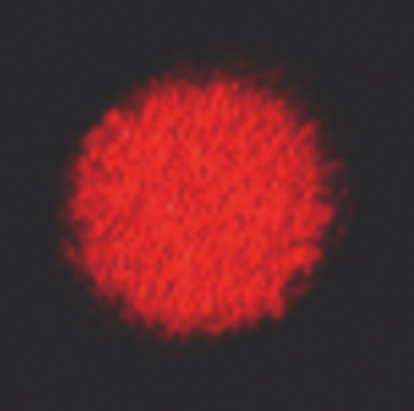Biomedical Engineering Reference
In-Depth Information
(
A
)
(
B
)
Figure 17.9
(
A
) Incorrect beam modes, unable to deliver accurate power density due to uneven distribution of energy in the beam spot. (
B
) Correct TEM00 (fun-
damental) mode beam, which will deliver consistent and accurate power density.
The laser operator should examine the unit while setting up
and testing, to be sure that all electrical cords, plugs, and con-
nections are intact and in safe working condition.
Extension cords should not be used on lasers, and in many
cases, isolated circuits are necessary to prevent power drains in
the laser treatment room.
It is important to check the cord connection to the foot-
switch, to make sure that there are no damaged or exposed
wires. Improper handling of the footswitch can result in this
type of damage, and if not repaired properly, it can cause elec-
trical shock upon activation.
America, Canada, the UK, Australia, New Zealand, Germany,
and Singapore have taken action.
This same activity has occurred in our healthcare work-
places, as we become more and more aware of the hazards
associated with surgical plume (7).
Surgical plume is more than an inconvenience, and must be
treated as an occupational hazard with a high level of risk
. Effec-
tive removal results from both proper fi ltration equipment,
and good work practices, including appropriate capture
(device positioned not further than 2 cm from the point of
evolution of the plume), systems, closed systems for laparos-
copy, in-line fi lters for wall suction, patient protection during
airway procedures, and evacuation systems now known as
local exhaust ventilation systems (Fig. 17.10).
Plume evacuation systems should be selected after careful
evaluation of needs and options available. Filters must remove
particulates to 0.1 µm, which is the mean average diameter of
viral particulates found in surgical plume. This requires an
ultra low-particulate air fi lter in order to eliminate the viral
hazards, and should be rated to 99.999% effi ciency to be effec-
tive. Filters should have a fi lter life monitor, indicating when to
change the fi lters. Units should also be assessed for suction
power measured in cubic feet per minute (CFM), (suction
should not be <50 CFM), and for the noise factor (should not
exceed recommended OH&S decibel levels).
High-effi ciency particulate air fi lters are NOT adequate,
fi ltering only to particle sizes of 0.3 µm (a mean average
diameter of bacteria and not an area of greatest concern in
medicine).
Masks are not meant to be the fi rst line of protective devices,
against plume exposure in the breathing zone. There are no
masks on the market today, including N95 masks, which are
capable of fi ltering out all airborne contaminants. Further-
more, high-fi ltration material works only while dry, so during
a lengthy surgical case, the fi ltration medium stops working
when the mask gets damp from breathing, defeating the pur-
pose of the mask. Also a factor is a fi t and wearing technique.
Masks (particularly N95 masks) must be fi t tested for each
Airborne Contaminants
As with all potential hazards, airborne contaminants are asso-
ciated with only certain wavelengths and applications, and the
LSO must evaluate this for each system and use, providing
appropriate protection as needed.
This hazard is not present when using low-power lasers;
however, it is a hazard associated with many other energy-
based devices, such as electrosurgical pencils, harmonic scal-
pels (ultrasonic devices), plasma generators, argon beam
coagulators, and mechanical instruments.
Research has proven that thermal disruption of viable
human cells, regardless of the instrument used, results in the
release of mutagenic and carcinogenic materials, including
carbon particles, virus, bacteria, DNA, aerosolized blood,
blood-borne pathogens, and over 41 known hazardous gases
such as benzene, formaldehyde, toluene, and acrolein.
Forceful microexplosions of tissue, as in applications of the
Q-switched Nd:YAG, or ruby lasers, as well as the tissue splat-
ter associated with the Er:YAG laser, also present airborne con-
tamination hazards, often in excess of that resulting from
thermal injury to tissues.
There is a global trend toward eliminating the hazards of
plume from our daily lives. The main focus has been on public
smoking in confi ned areas such as airplanes, restaurants,
offi ces, and hotels. The hazards contained in plume are well
documented and governments around the world such as
















